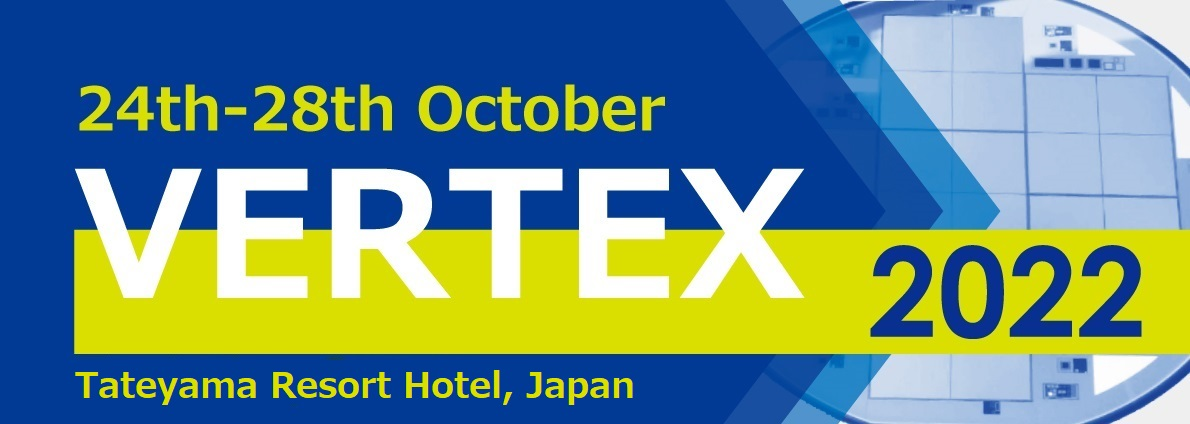Speaker
Description
The Belle II experiment at the super KEK B factory (SuperKEKB) in Tsukuba, Japan has been collecting $e^+e^-$ collision data since March 2019. Operating at a record breaking luminosity of up to $4.7 \times 10^{34}\, \textrm{cm}^{-2}\, \textrm{s}^{-1}$, data corresponding to $424\, \textrm{fb}^{-1}$ has since been recorded. The Belle II Vertex Detector (VXD) is central to the Belle II detector and its physics program and plays a crucial role in reconstructing precise primary and decay vertices. It consists of the outer 4-layer Silicon Vertex Detector (SVD) using double sided silicon strips and the inner 2-layer Pixel Detector (PXD) based on the depleted P-channel Field Effect Transistor (DEPFET) technology. The PXD DEPFET structure combines signal generation and amplification within pixels with a minimum pitch of $55 \times 50\, \mu\textrm{m}^2$. A high gain and a high signal-to-noise ratio allow thinning the pixels to $75\, \mu\textrm{m}$ while retaining a high pixel hit efficiency of about 99\%. As a consequence, also the material budget of the full detector is kept low at $0.21\%\, X_0$ per layer in the acceptance region. This also includes contributions from the control, ADC, and data processing ASICs as well as from cooling and support structures. \
The talk will present the experience gained from 4 years of operating PXD; the first full scale detector employing the DEPFET technology in HEP. Overall, the PXD has performed very well and robustly meeting expectations. Operating in the intense SuperKEKB environment poses many challenges that will also be discussed.
The current PXD system remains incomplete with only 20 out of 40 modules having been installed. This is why a full replacement has been constructed and is currently in its final testing stage before it will be installed into Belle II during the ongoing long shutdown that will last throughout 2023.
